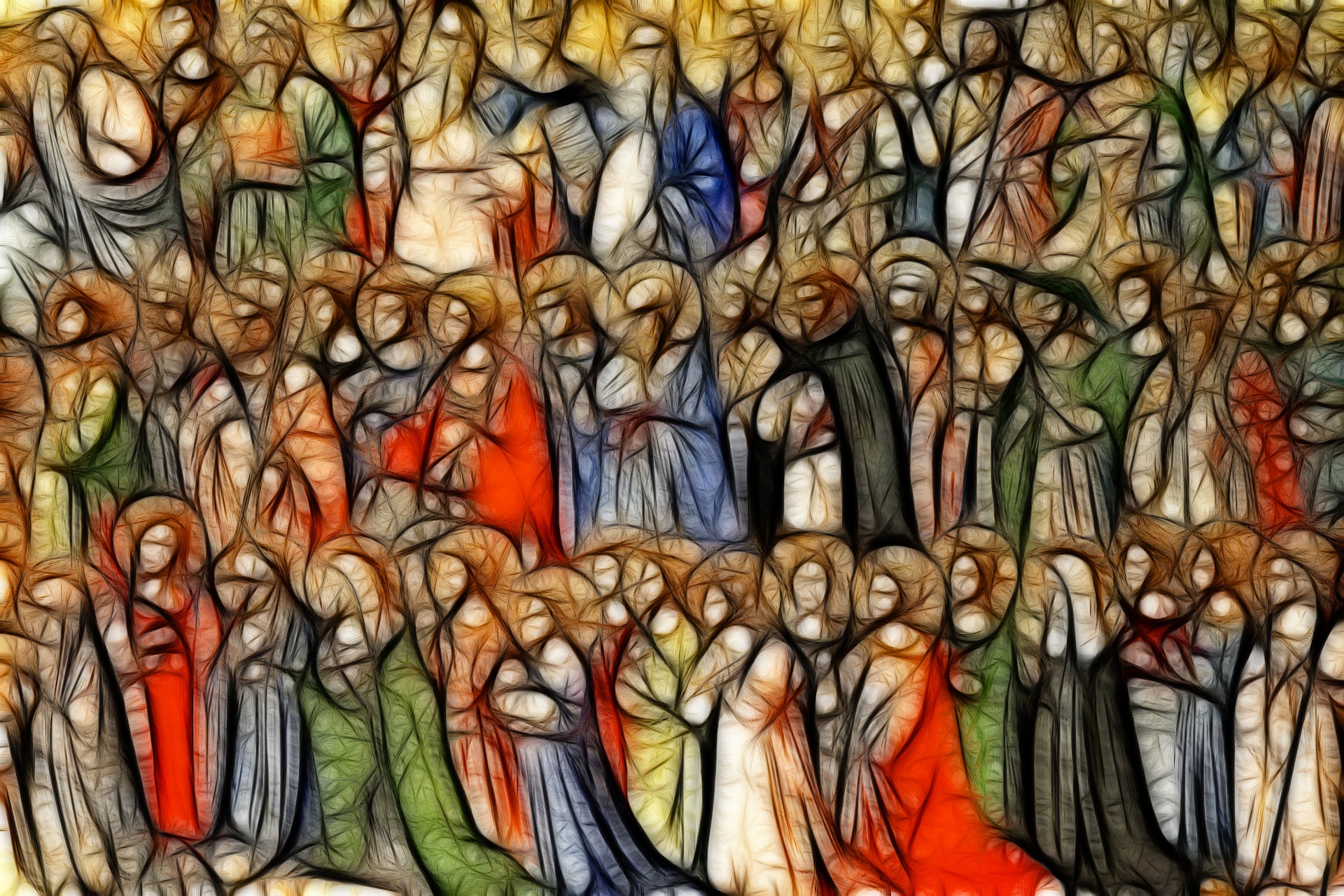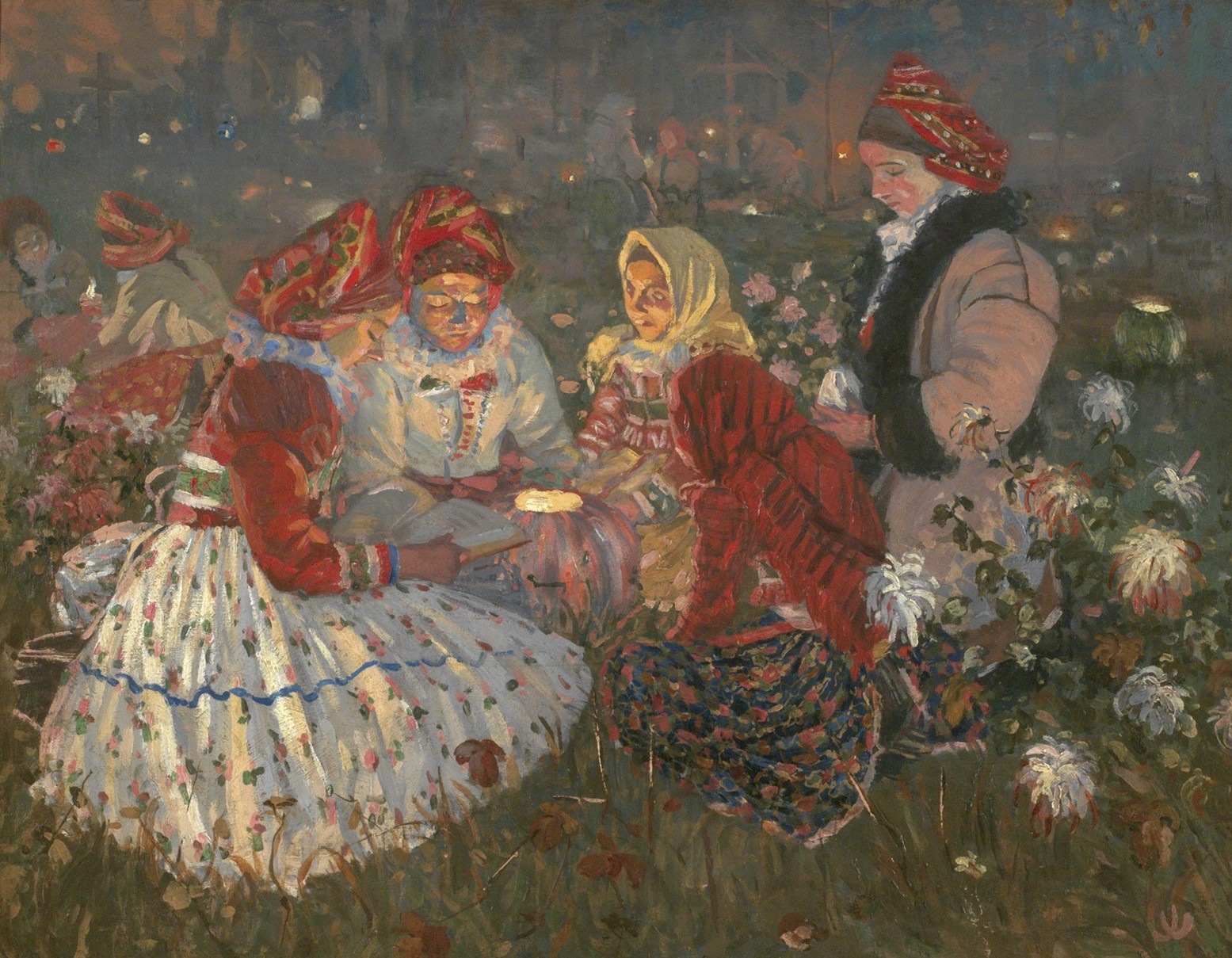The Czech Republic may have a reputation of being one of the least religious countries in the world, but besides Christmas and Easter that do have a strong place in our culture regardless, there is one other important Christian holiday that we celebrate almost universally. The All Souls’ Day, or as we call it, “Dušičky”.
On the 2nd of November, cemeteries around the country transform. The flickering of candles on every single grave, the solemn beauty of the flowers and wreaths, the atmosphere of quiet meditation all create a meditative, haunting yet beautiful experience.
So why do we do this? And where does this tradition come from?
A Day for All Souls
The Christian tradition of celebrating the All Souls’ Day goes back to the Abbot of the Cluny monastery in France, Saint Odilo, who established the day in the 11th century as a commemoration of the dead.
Legend says it started when a pilgrim had a vision during a storm. He saw the souls of the dead in Purgatory, suffering in pain as their sins were purged by the flames. He came to Father Odilo to ask if there was a day of the year when one could pray for the souls of the dead, to try and alleviate their suffering.
Another, more practical theory states that Odilo was trying to combat an enduring Pagan tradition, and so he created a Christian celebration that could serve the same purpose and help eliminate old rituals people were clinging to.
The date settled on the 2nd of November, the day after the All Saints’ Day, traditionally celebrating all the Christian saints that do not get their own special feast day elsewhere in the year.
The tradition started spreading, and by the 13th century was common around the entirety of Western Christianity.

Deeper Roots of Dušičky
The tradition of remembering the dead goes, however, much deeper than 11th century. Saint Odilo, after all, may have been influenced by Pagan rituals.
Death is an important part of life. It marks a critically important transition in every faith between this life and whatever the next one may be. Collectively, important transitions (between life and death, summer and winter, day and night) are called “liminal transitions”, and many cultural phenomena exist to help us cope with them.
The origins of Dušičky most likely come from a Celtic ritual “Samhain” (pronounced “su-“ like the beginning of “summer” and “-win” like the beginning of “winter”, and that’s oddly appropriate).
Samhain was a festival happening at the transition between the warm and cold parts of the year, between the autumn equinox and the winter solstice. It was a farewell to the summer, warmth and the sun, a celebration of harvest, and the beginning of the harsher half of the year.
Many cultures feel strongly about the symbolism of fire, and the Celts were no exception. At Samhain, the old fire that was kept burning permanently in one’s home was extinguished, and a new fire was started. The belief was that whatever was bad burned with the old fire, and the new fire brought hope.
Not Just for the Living
The Celts believed that the time of Samhain was also the time when the souls of the dead could more easily cross into the world of living. The light of the fires would guide them home, they would sit by the pyres and warm themselves, eat, drink, and remember what the world of the living was like.
As cosy as it sounds, the spirits of the dead may not always be benevolent, and so to prevent the evil spirits from causing mischief, there would be lights warding them away from people’s homes. These lamps would be decorated with scary faces, often carved into bulbous vegetables.
And while you’re surely thinking of carved pumpkins, the so-called jack-o’-lanterns, the traditional vegetable of choice was turnips. They stem from the belief that evil spirits cannot bear to look at themselves, and so the monstrous faces scare them away.
In Bohemia, these lamps were also traditional, but the material we used was the lovely named “mangelwurzel” or “mangůl” in Czech. It’s a type of beet that’s grown for feeding livestock, and so it would’ve been in ample supply and it wouldn’t be considered particularly wasteful to carve it into a lamp.
Current State of Dušičky
Today, there is a noticeable tension between the Christian tradition of Dušičky, and the revived Pagan tradition of Halloween.
If you walk around a major city or a shopping mall, you will notice bright orange pumpkins, candles and spooky decorations on every corner. The evening of the 31st of October, of course, is the peak for scary masks and costumes and hundreds of spooky themed parties.
In a way, this is not dissimilar to the tension around Christmas, between commercialised Santa Clauses and the traditional Czech Vánoce with “Ježíšek”, the Little Baby Jesus. And just like with Christmas, while it may seem that capitalism wins the day, you only need to look at the real lives of the people to see that Dušičky are nowhere near defeated.
The stable place that Christmas and Dušičky have in our society may come as a bit of a surprise if you’re familiar with one of our “claims to fame”. The Czechs are one of the least religious nations in Europe, with only roughly 30 % of the population religious. But there is something transcendental about these holidays, and they are not only religious festivals, but a well-entrenched part of our culture, as well.
Traditions of Dušičky
To see the tradition is alive and well, all you need to do is visit a cemetery. Any cemetery around the country. The day of All Souls, or the nearest weekend to it, you will meet dozens of people in every one of them.
They will be tidying up, brushing off leaves, dealing with weeds, planting flowers, cleaning tombstones and gravestones. The cemeteries will be abuzz with activity. Often, family members and friends will run into each other, unexpectedly, unplanned, and reminisce and chat about their loved ones, long since departed.

There will be candles, symbolising the purifying fire of the Purgatory, the cleansing of the souls of the dead, representing the prayers and the thoughts of the living. Christianity believes that the living can, through prayer, help the souls in Purgatory and shorten the time they spend there before they move on to Heaven.
There will be flowers, representing hope of a new life after death. So too will evergreen plants be there, to represent resurrection, immortality and the preservation of the dead in our memories.
Wreaths are especially common, the unbroken nature of a circle representing the infinity of space, the never-ending cycle of birth, death and rebirth.
Of the flowers, chrysanthemums are the traditional flower of choice, so much so that the folk name for it is, in fact, “dušička”. They represent protection from evil and malevolent forces. On a practical note, they are quite resilient and usually bloom until the first frosts, so they are quite well suited for early November.

The Mass
Another important part of the Christian tradition is the mass for the dead that happens on the 2nd of November. Normally, a prayer for the dead is a part of every Christian service, but on the All Souls’ Day the entire service focuses on the dead.
Not only the dead of faith, however, it is the one important service that prays for all the dead, even the ones without faith or of different faiths.
A common part of the service is music, and many composers had written powerful, atmospheric compositions to accompany the service for the dead, the so called “Requiems”. Wolfgang Amadeus Mozart is especially renowned for his Requiem, and every year it’s performed in churches all over the world, including my personal favourite place, the Church of Saint Salvator by the Charles Bridge in Prague.
After the mass, there’s often a procession that goes to the local cemetery to pray for the dead there, closer to them. The people will then leave behind candles and leave. There’s a reason they don’t want to stick around too long.
There Has to be a Spooky Legend
That’s because there’s an old legend that on the night of All Souls, the souls most heavily weighed down by their sins will rise out of their graves, out of Purgatory, and will sit on their tombstones all night.
They will cry and weep and moan, what with the pain and the regret they feel, and they will threaten any living who dare trespass on their territory that night.
When the first bells ring the next morning, the souls will have no choice but to return to Purgatory for another year.
A Tradition for a Different Time
Comparing the cheerful, loud, wacky nature of Halloween to the more solemn, mournful and thoughtful nature of Dušičky, there is an obvious contrast here.
The modern age favours the first, and obviously Halloween is a massive holiday. Pumpkins started appearing in this country in the 1990s, and by now are quite commonly carved by children and adults alike.
The tradition of trick-or-treating has yet to make its way here, but perhaps that’s because we have a similar tradition on Easter.
But despite the appeal of a fun night with ghosts and masks, for the majority of us Czechs, the real holiday is Dušičky, and while it may not look like it at a glance, I’d bet money that candles far, far outnumber the masks and pumpkins combined.



Comments
Comments are closed.